
What links led you to the path of studying Cham culture?
- I am Cham, born and raised in a matriarchal family, so it is different from the patriarchal society common in Vietnam. My father was a shaman, a Ka-nhi musician who taught me Cham from my childhood. My mother was a potter and my grandmother was very religious. When there was a festival, she often carried a tray of gifts and took me along. Just like that, the images of the ancient Cham tower, the songs and rituals of the festival slowly seeped into my memory without me knowing.
Later in university, I was fortunate to have many teachers who were prestigious researchers, very interested in Cham culture such as the late Professor Tran Quoc Vuong, Professor Ngo Duc Thinh, Professor Ngo Van Le... who inspired me and especially the late Professor Phan Dang Nhat who wholeheartedly guided and accompanied me until his death.
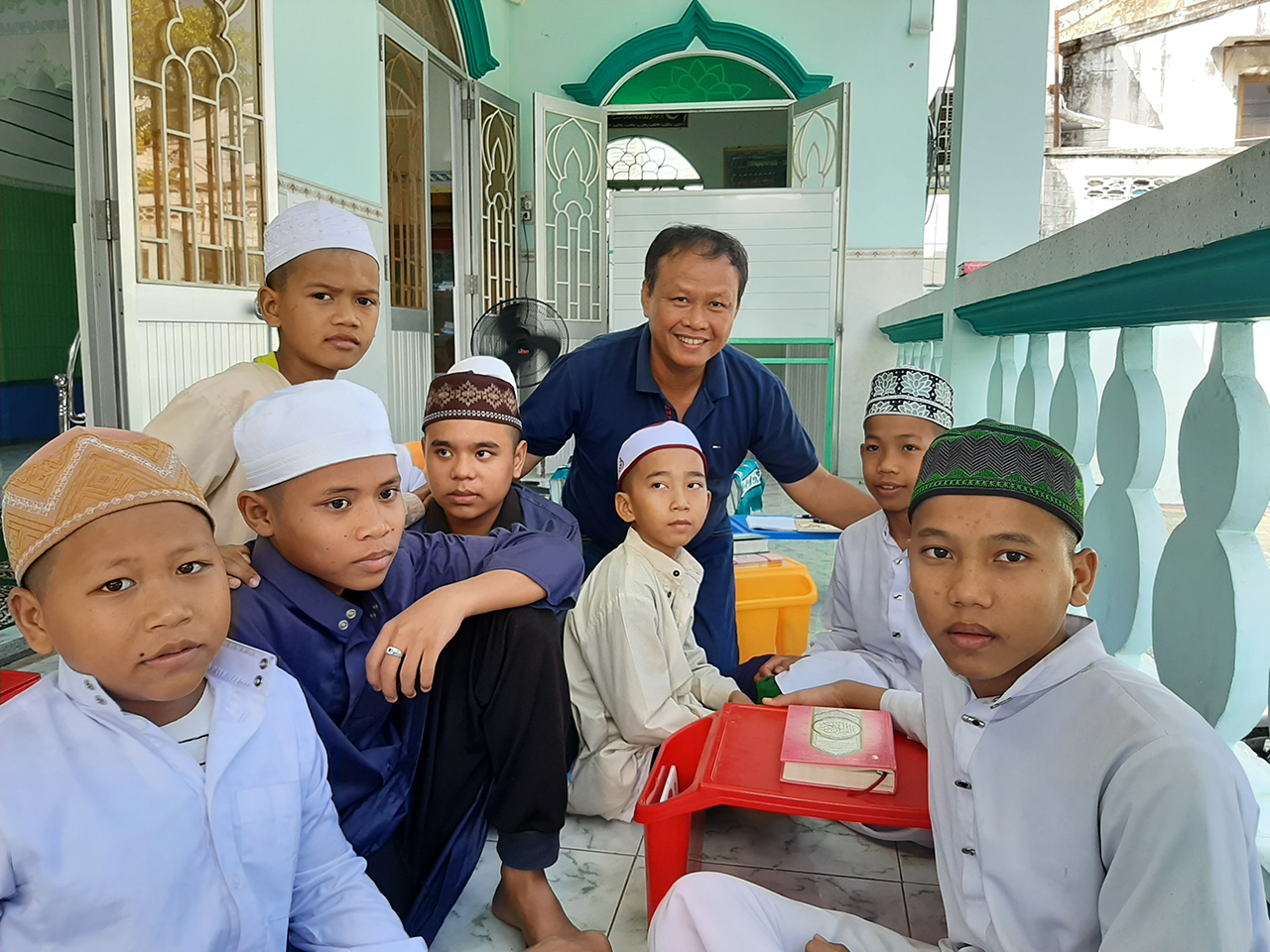
Research on Cham churches and classrooms in Tra Vinh (2017)
What is your own way of adding to the legacy left by your predecessors?
- Western researchers have a saying: "God is in the details". Taking the details and the specifics lightly..., that is also an inherent weakness often seen in our working culture compared to the West or other developed countries. For me, when researching a problem, I have to start by finding out and deeply researching each specific detail to be able to discover the differences and uniqueness. In addition to teaching time, I also go on field trips to collect documents in the Cham and Central Highlands regions. Every day at home, I diligently examine, collect and analyze each word in thousands of pages of documents to discover new things. From there, I select, analyze and gradually arrange them into a series of systematic and scientific problems. Then I summarize them into theories, outlining an approach to researching Champa culture and history. As a result, I have so far created a book series on Champa culture and history and other books, nearly 40 volumes.
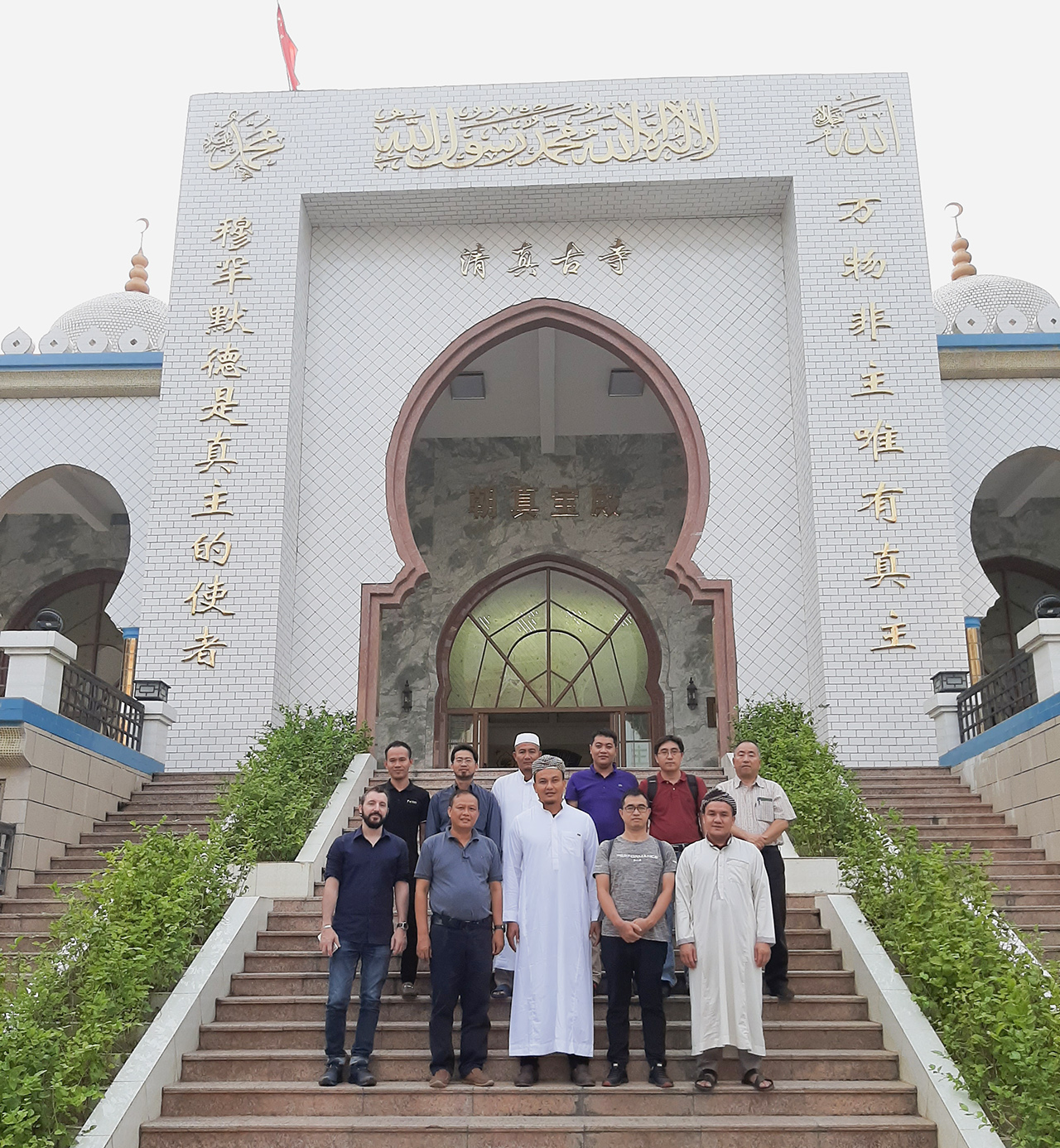
With international scientists (Japan, France, China) studying Cham Islam Hainan - China (2018)

What remains of Champa heritage , inside and outside Vietnam's borders ?
- Appearing in the 2nd century, the Champa civilization flourished and then disappeared in the early 19th century, leaving behind a long chain of about 250 temples and towers in the Central region, which still hold many mysteries that have not been solved. In addition, there are about 84 unique festivals, of which the most typical is the Kate festival - Ramawan/Ramadan, which still takes place every year; two famous craft villages are Bau Truc pottery and My Nghiep weaving in Ninh Thuan.
Up to now, Cham culture still has a great influence on Vietnamese culture in the Central region such as the worship of Mother Goddess Thien Y Ana (Hon Chen Temple - Hue; Thu Bon Tomb - Quang Nam, Po Nagar Tower - Nha Trang); the art of singing and dancing (Hue folk songs, Hue songs, Ba Choi and Hat Boi, conical hat dance), Ao Dai with the poem conical hat; boat building techniques, seafaring, salt making, fish sauce making...
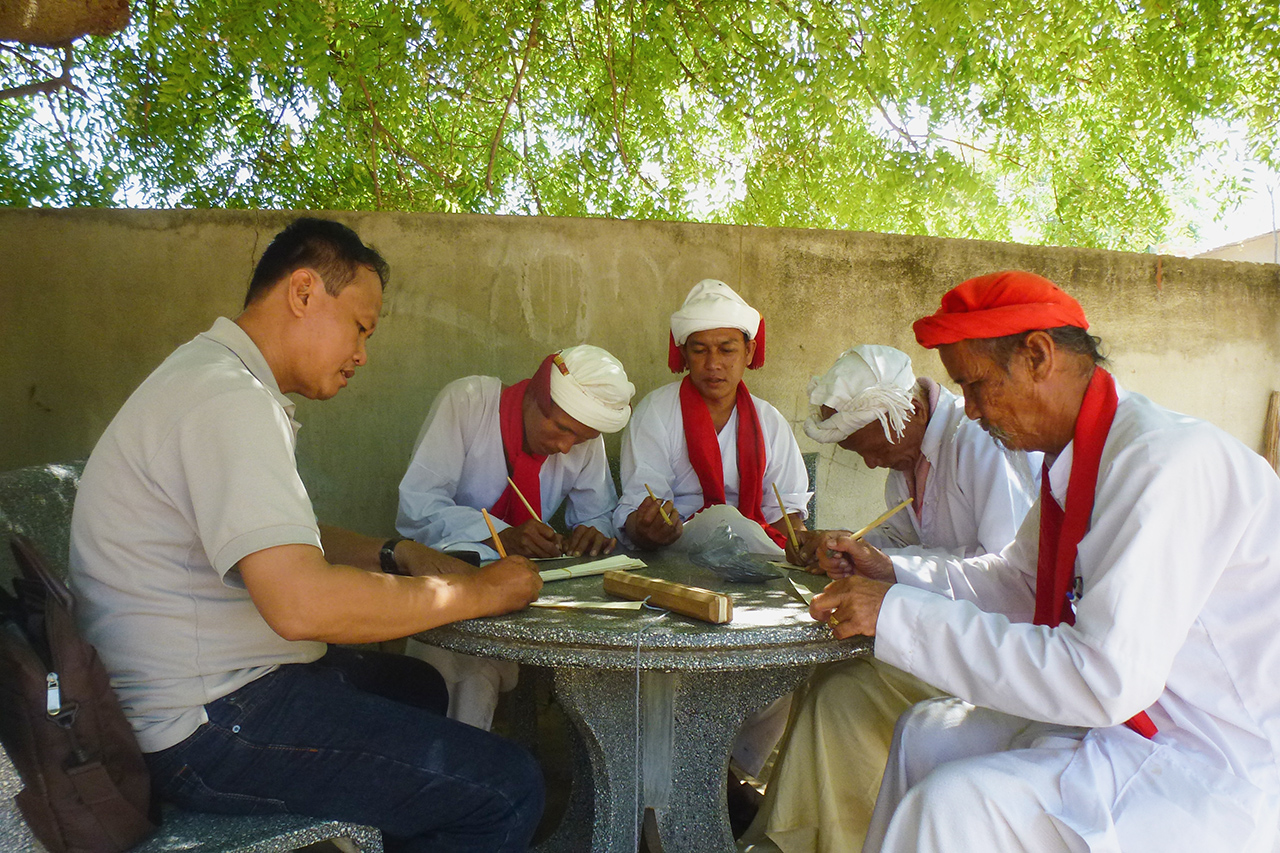
With monks, research and restore the lost Cham palm leaf writing method (2015)
Champa culture also spread to the North, contributing to the formation of the once brilliant Thang Long culture. Up to now, scientists have discovered many relics and artifacts bearing the Champa mark on Thang Long land such as Thang Long Imperial Citadel, Ba Gia Pagoda, Ba Danh Pagoda, Phu Gia Communal House... or Dam Pagoda (Bac Ninh)...
Champa also brought music to teach Japan (Buddhist philosophy) in the 7th century and taught the Japanese how to make colored glazed pottery in the 10th century. In addition, ancient Chinese and Dai Viet documents show that Champa was also the birthplace of Chiem-season rice (short-term rice including drought-resistant rice and wet rice), which created the green revolution in the South China region (China), in the North (Vietnam) from the 10th century and in the Kelantan region (Malaysia) in the 17th century.
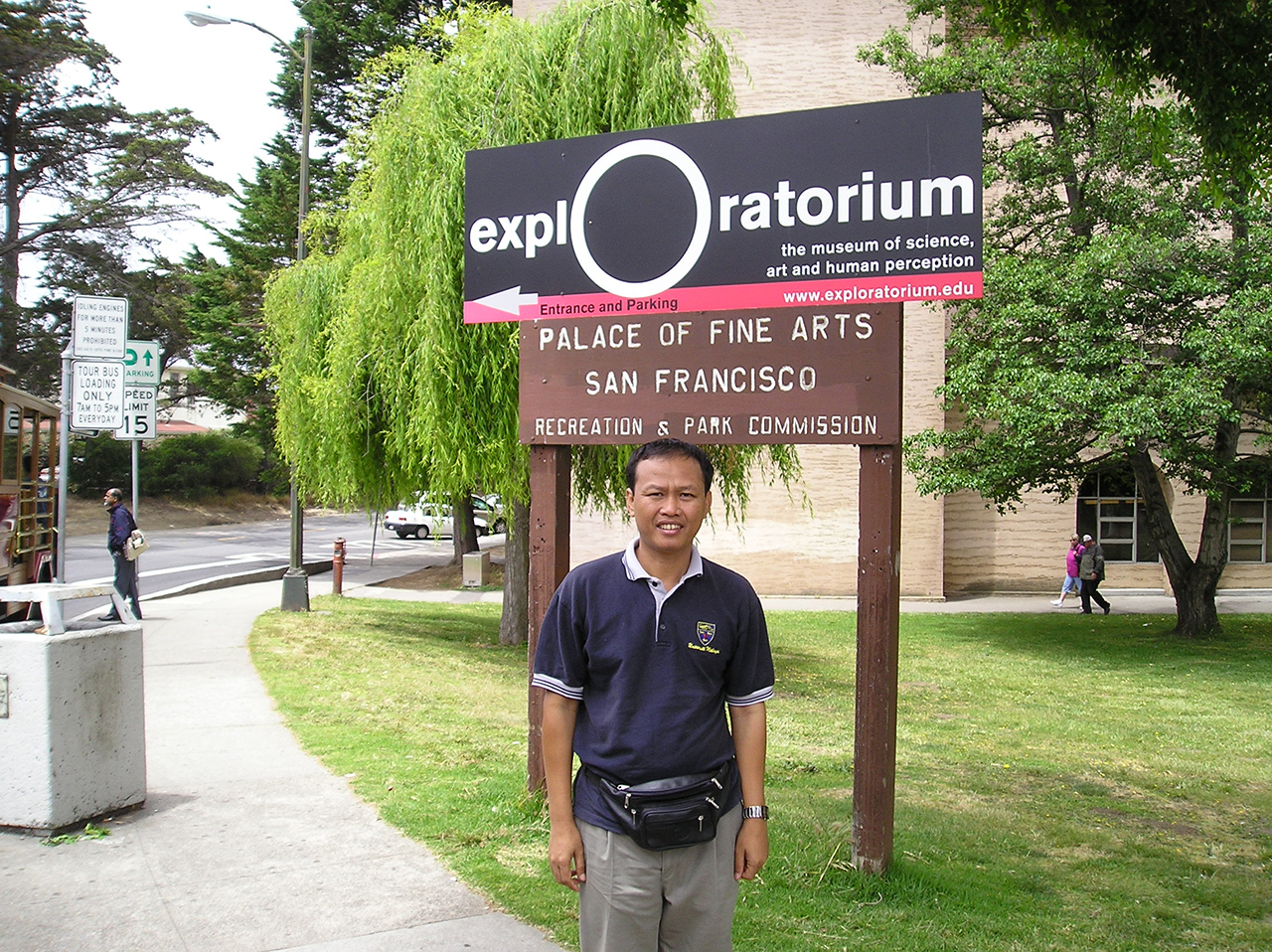
Cham Community Research in America, 2007
The Cham people are also recognized by the world as masters of brick making (brick is porous, light, does not absorb water, does not grow moss); adhesive processing and environmentally friendly brick temple construction techniques. Many Champa stone sculptures such as Apsara dancers, Tapasi Beer statue, Losketvara Buddha statue ... have become masterpieces of humanity.
To date, Cham cultural heritage is not only of national but also international significance. In 1999, My Son Sanctuary was recognized by UNESCO as a world intangible cultural heritage; in 2022, "Cham pottery art" was also listed by UNESCO as an intangible heritage of humanity in need of urgent protection.
What mysteries in Champa cultural history need to be deciphered?
-In our opinion, Champa history needs to be rewritten in a more systematic way with an interdisciplinary cultural-historical perspective. Use history and historical context to clarify the cultural characteristics of Champa in each period; conversely, use culture to explain the events and changes in Champa history. Only then can Champa culture and history be clarified comprehensively.
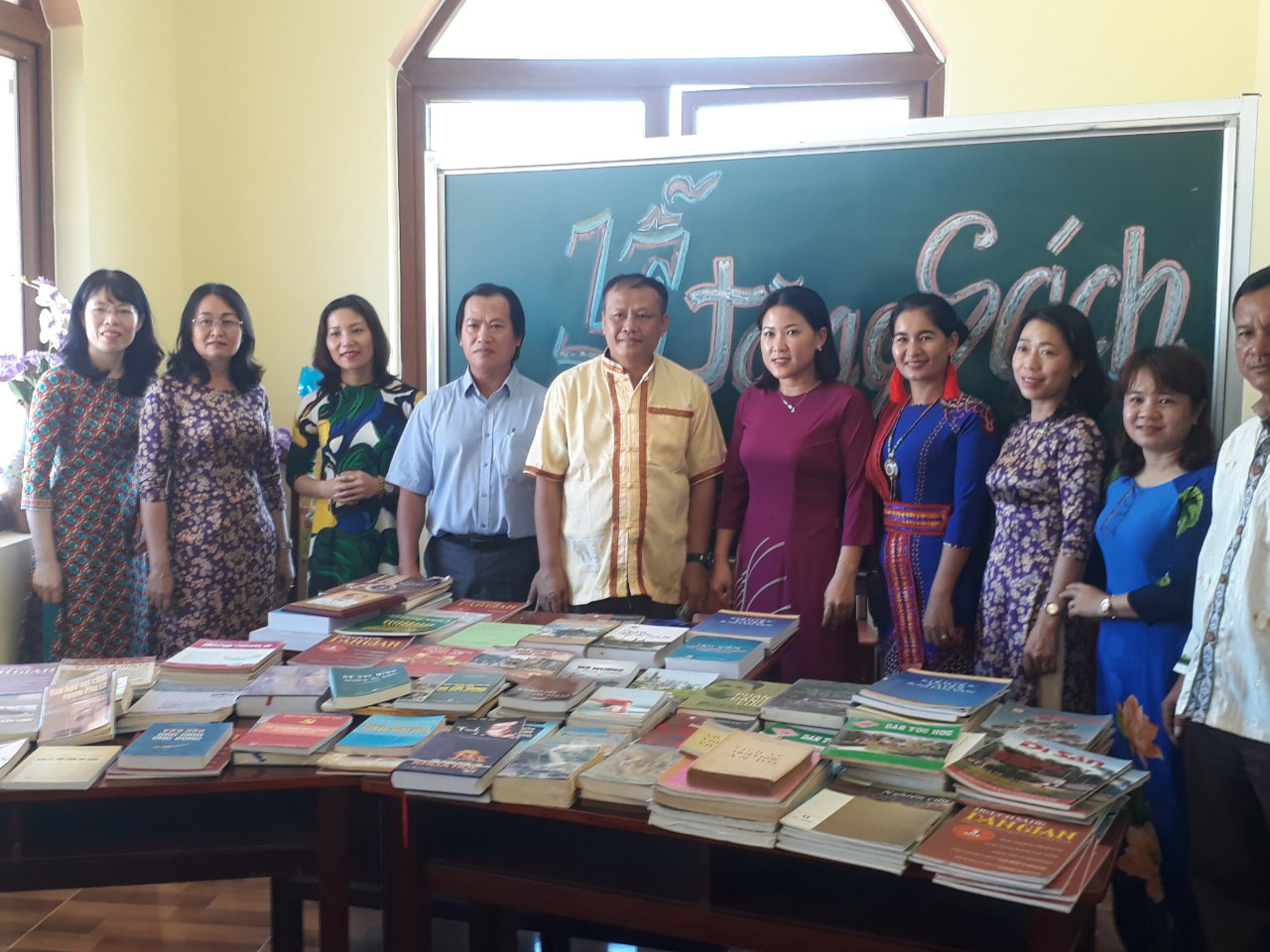
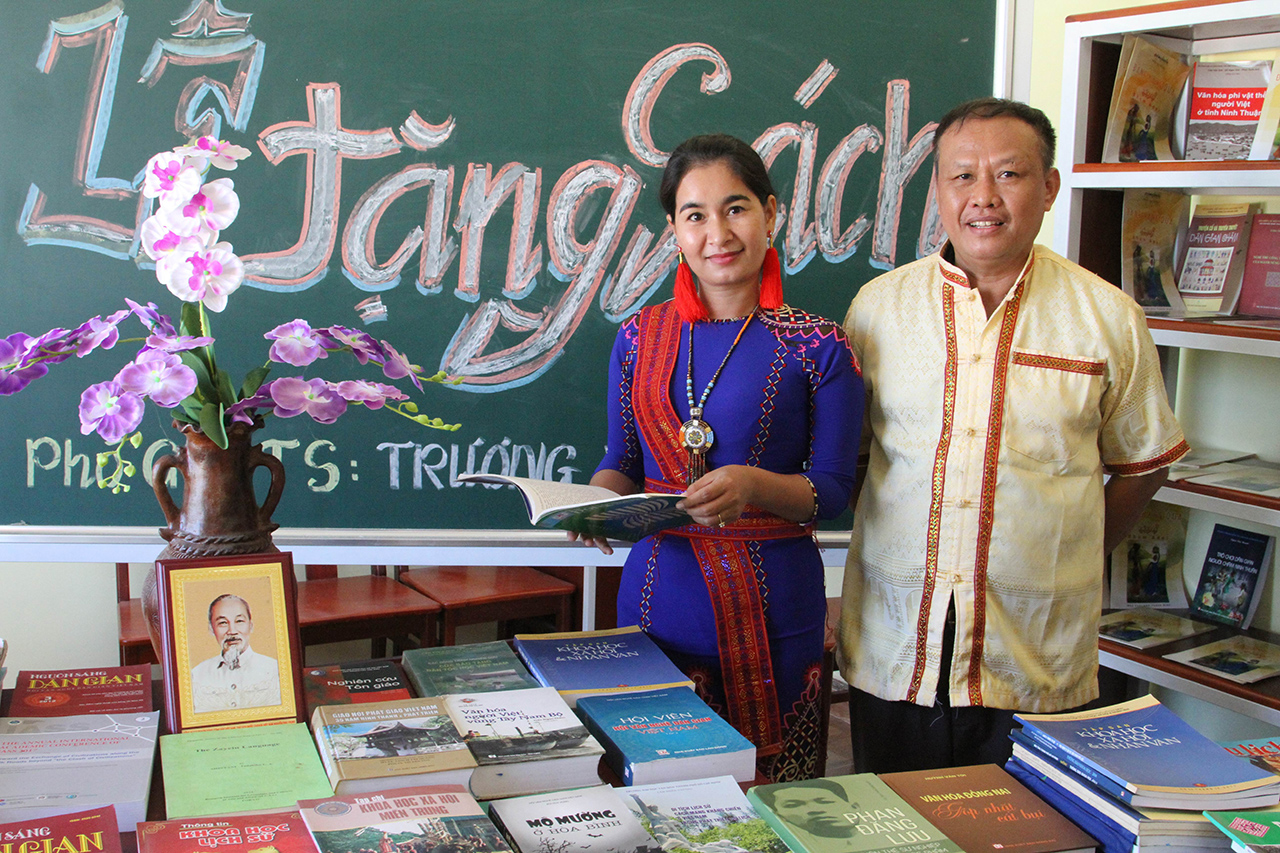
Donating books to Bao Tho Association of a Cham village in Ninh Thuan, 2017
With that method and approach, using many different sources of documents such as ancient Chinese, Dai Viet, Java, Malay and inscriptions as well as Cham script documents, I delved into every detail, every word over a period of 30 years to form 4 volumes of Champa Culture - History books sponsored by Vingroup Innovation Fund (VinIF). The book series not only shows readers the overall Champa culture - history from the Northern Champa region (Indrapura - Hue) - Amaravati (Quang Nam Da Nang), Vijaya (Binh Dinh) to the Panduranga region - Southern Champa (Ninh Thuan and Binh Thuan today) from a federal perspective (Mandala).
In addition, the book also decodes mysteries in the history of Champa - Dai Viet that scholars have been debating for centuries, wasting a lot of ink without any conclusion, such as the love story of Princess Huyen Tran and Che Man; what military secrets made Che Bong Nga conquer Thang Long three times; what are the unique features, strategies of martial arts and military arts of Champa and Dai Viet in history...
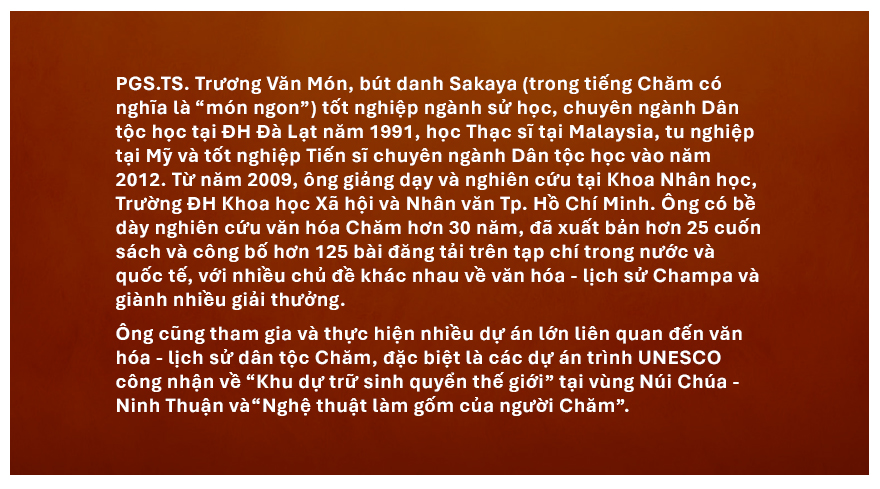
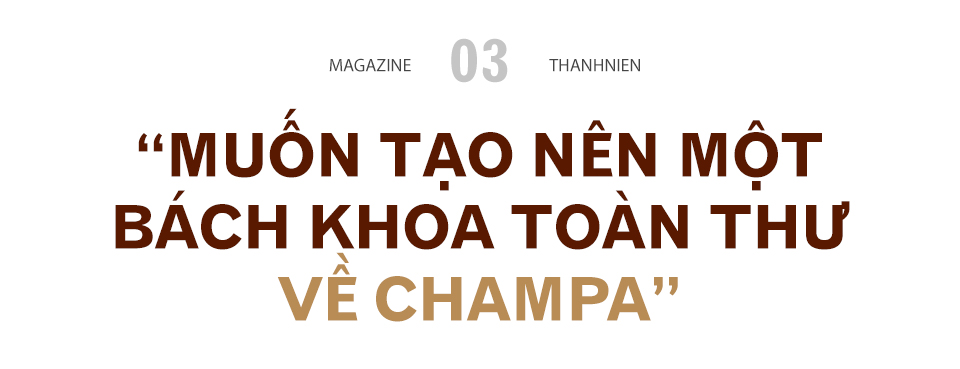
In the project Research, collect, publish and preserve the cultural and historical values of the Vietnamese Cham people , you shared your ambition to complete an encyclopedia of Champa culture and history . What is the value and message of this work?
- Research on Champa culture and history in particular and scientific research in general need to be comprehensive and systematic, in terms of history, culture, literature, philosophy, art, religion, architecture, sculpture, craft villages, traditional medicine, etc. to fully understand the richness and diversity of this massive culture. To do this requires researchers to make every effort with profound interdisciplinary knowledge, diligence and determination with long-term research programs.
In the digital age, hopefully it will spread quickly, inspiring readers and experts, encouraging them to join hands in researching and preserving the cultural identity of their nation in the integration process.
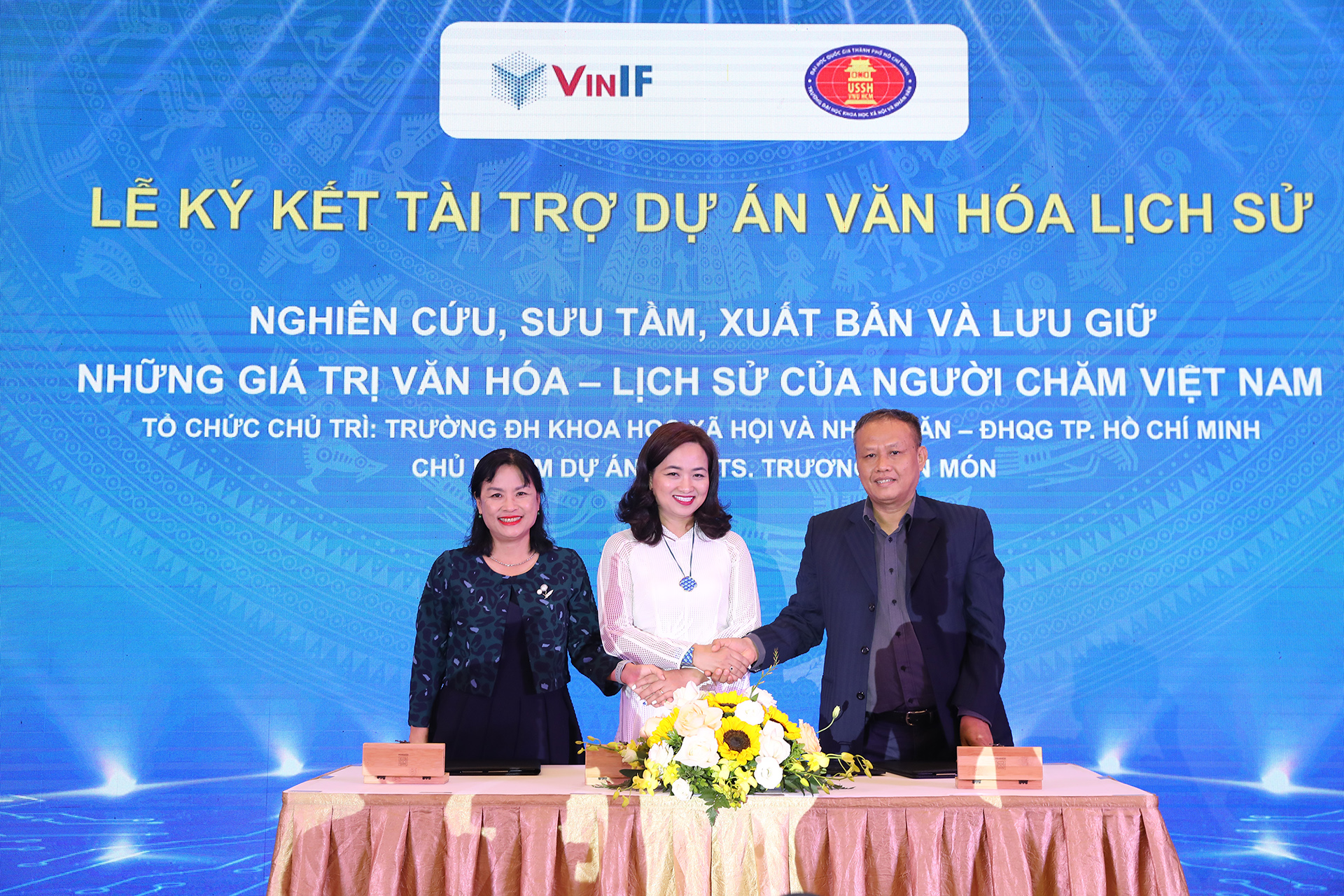
Assoc. Prof. Truong Van Mon at the project sponsorship signing ceremony with leaders of VinIF Foundation
What legacy do you want to leave in education? After you, who can follow this path?
- Champa cultural heritage is massive, but unfortunately, we are not really interested in training and researching Champa culture and history, while many countries in the world have long had Champa studies and always have separate professorships for this field, for example France, China, Malaysia, Indonesia...
We do not have a central research institute, but only provincial research centers that are more symbolic than scientific. Major universities in our country do not have this major code. I hope that in the future there will be a Champa Studies major in our country. Accordingly, my published works can contribute more documents to compile textbooks, monographs, and form a database to train high-quality students specializing in Champa Studies research. Once there is no school, no major training Champa Studies, where will we find the next generation of professional researchers?
Fortunately, in recent years, thanks to private funds like VinIF with a truly fast, professional, and modern way of funding and supporting like those in advanced countries in the world, we have initially screened and attracted dedicated researchers who are passionate about science with specific products of high scientific content, in scientific research in general and Cultural - Historical research in particular.
Thank you sir.
Source: https://thanhnien.vn/nha-nghien-cuu-van-hoa-cham-pgs-ts-truong-van-mon-can-co-nganh-champa-hoc-o-nuoc-ta-185240528105107102.htm


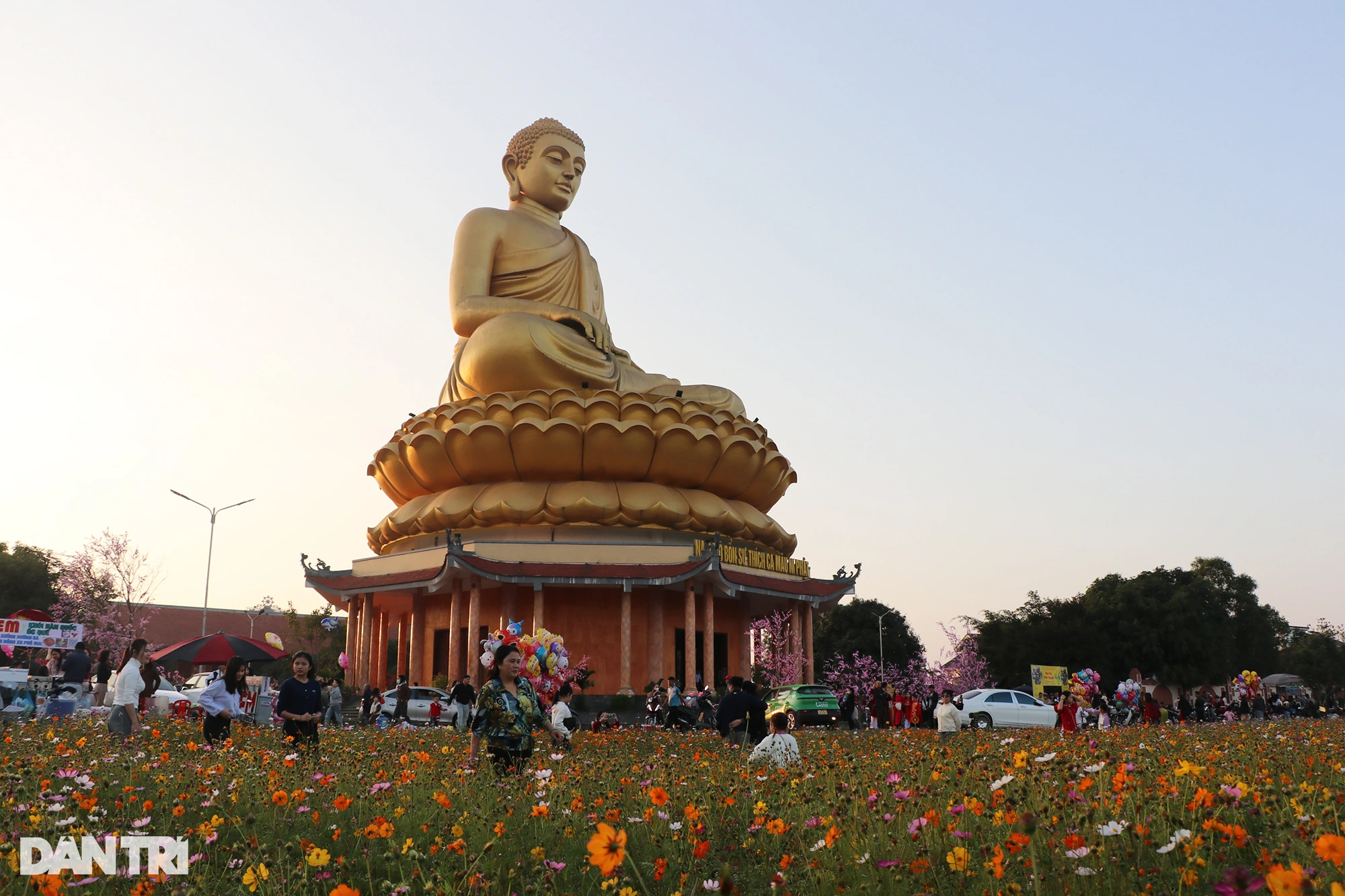





















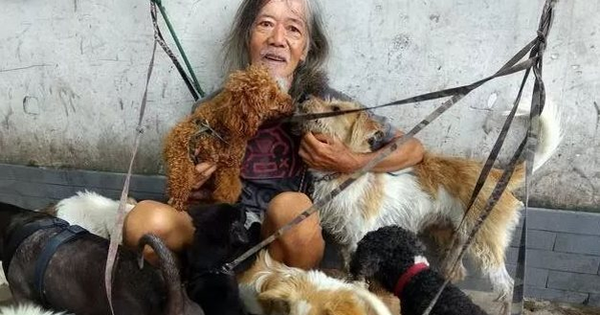






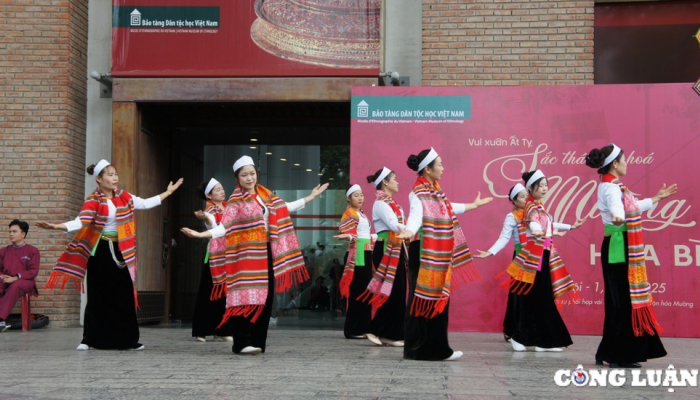

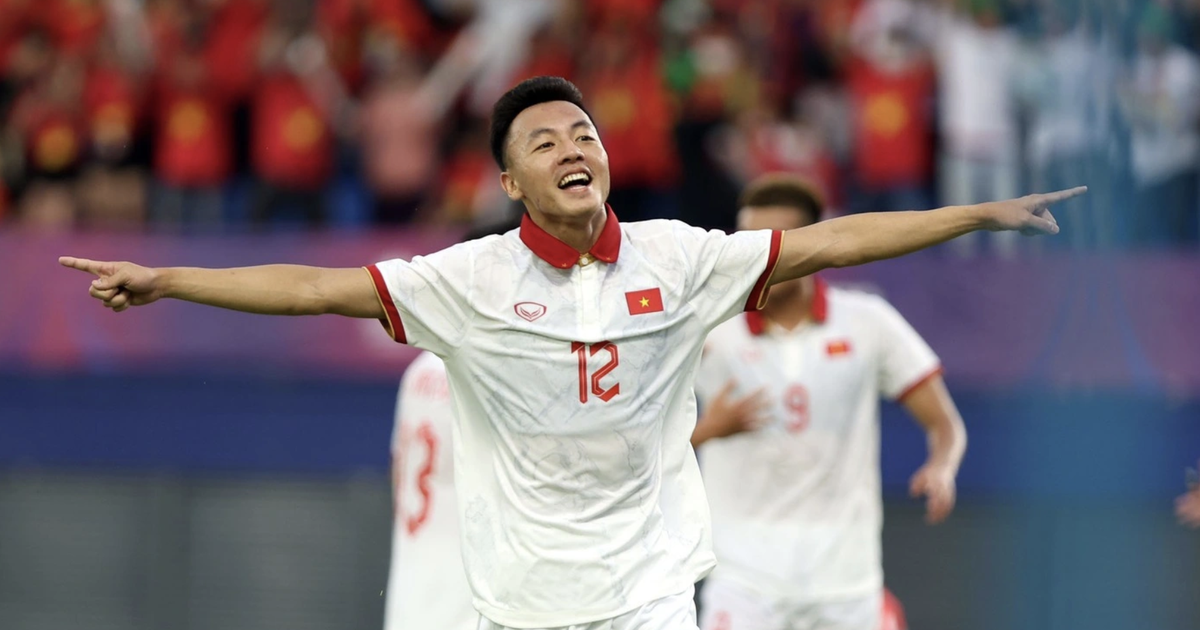

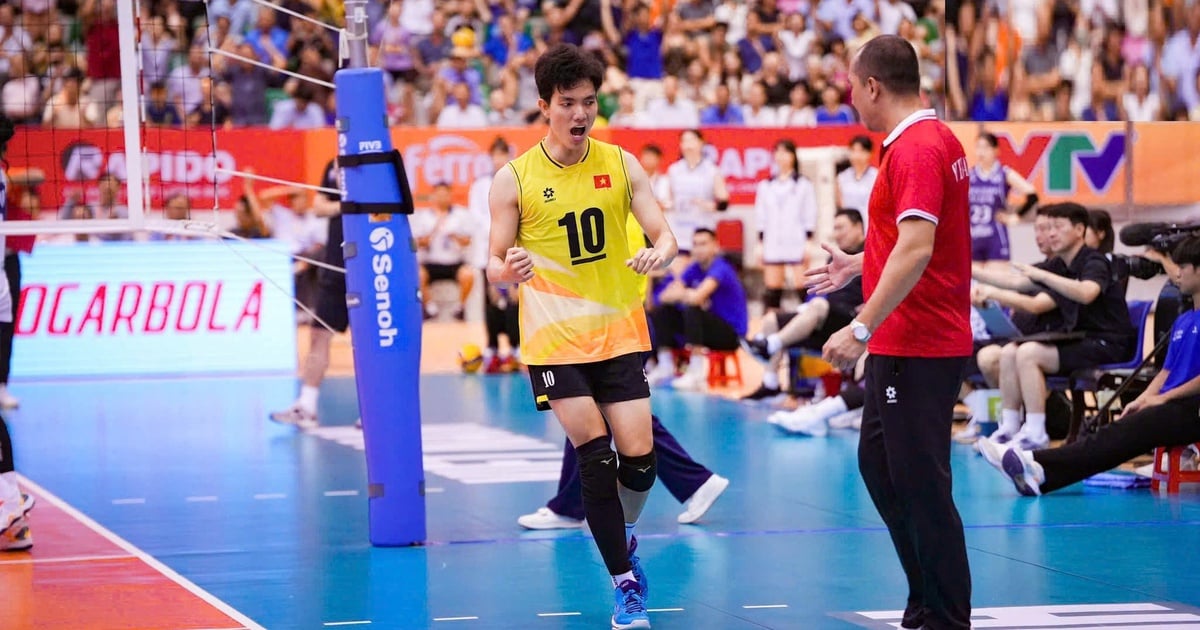
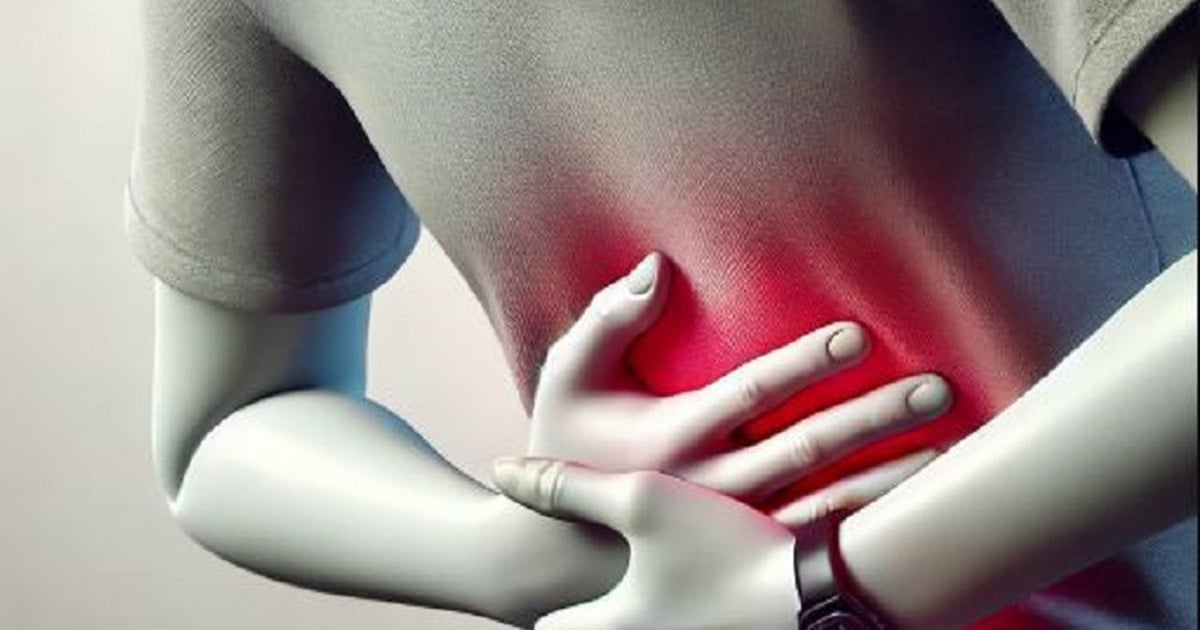
















Comment (0)